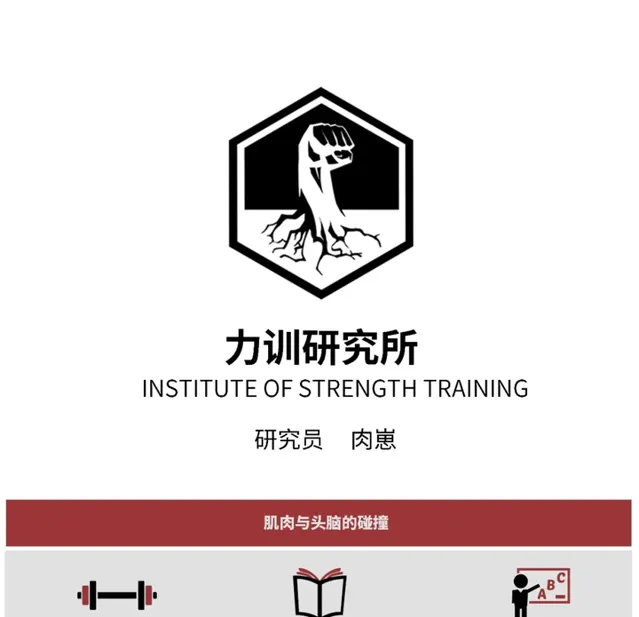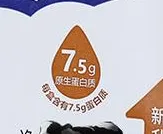
一、「過量蛋白質傷腎」還不能成立
過量攝入高蛋白,有潛在傷害腎的可能,但是沒有能夠實錘。
沒有足夠的證據證明高蛋白飲食對健康人的腎有傷害[8]。
現有的證據要麽是基於推測,要麽是基於對腎功能不全的人[9,10]。
有些觀點認為在蛋白質代謝產生的代謝物可能會引發血液酸化、血尿素過多等問題,但反駁的數據也存在。
William等人的研究發現,高達3.6g/kg體重/日的蛋白質攝入量,對體液的狀態影響非常小[11]。
二、吃過量蛋白質,其實非常難
我們是中國人,很難蛋白質攝入過多,絕大部份人極大概率是攝入不足。
因為按相對購買力來說,我們的食物總體來說普遍比美國、德國等要貴得多,出國的朋友都知道。
就目前主流營養學界推薦的每日營養供給量(RDA),建議是每KG體重0.8g蛋白質/日。
但是這個數據只考慮了維持氮平衡[1]的 最低所需量 [2]。
更多的數據表明,即便對於老年人來說,RDA也是不夠的[4,5]。
比如,某些胺基酸的額外代謝作用需要血液和細胞內水平高於蛋白質合成的最低需要[12]。
有研究發現蛋白質攝入量>1.0g/kg體重/天,對健康老年人的有害肌肉萎縮有保護作用[7]。
一項為期6年的縱向觀察研究,擁有較高的蛋白質攝入量的老年女性,有更好的身體機能[6]。
此外,RDA也也沒考慮運動健身、肌肉修復、組織增長對於蛋白質的額外需求,通常運動人群比一般人需要更高的蛋白質攝入,這是常識。
那不運動呢?
你的身體就欠佳。
我在之前的文章中已經列舉過大量證據和數據證明,人體只有在有充足運動的狀態下,才是健康和有質素的生活。
肉崽:力咖新手指南(七)我們為什麽要訓練?
所以,0.8太少。
因此,美國食品和營養委員2002年設定了的建議的蛋白質攝入量區間,建議是 0.8-2.5g每KG體重/日 [2],並且沒有提出上限風險(without any identifiable Upper Limit risk)。
2.5g是個什麽概念呢?
一個75kg的成年男子,他每日吃到187g蛋白質。
這相當於60個蛋清、接近2斤雞胸肉,或者接近13斤牛奶。
這個量,我相信絕大多數人不可能吃下去,更不可能每天都這麽吃。
比方說,我們用電商網站上某常見牛排品牌來計算。
一盒牛奶250g(半斤)含有7.5g蛋白質。
要吃夠187g,那需要25盒*250g=6250g牛奶= 12.5斤牛奶。

而且要註意,這還是每天平均的量,不是偶爾一天就夠了;這也不是上限,還可以更多;
甚至於——如果我們考慮到蛋白質的吸收率問題,可能實際吃下去的值,還得高於這個值。
所以,其實人體對蛋白質的耐受度/接受度,比大眾想的要高得多。
蛋白質吃多了,理論上確實是有危害的,但是實際上,並不容易吃「過多」。
原因很簡單,蛋白質比脂肪或者碳水都更難消化,更脹肚[3]。
也就是說,很可能還沒吃過量,已經吃不下了 。
References
1. Munro HN, Crim MC. The protein and amino acids. In: Shils ME, Young VR, editor. Modern Nutrition in Health and Disease. 7. 1988. pp. 1–37.
2. Institute of Medicine, Food and Nutrition Board . Dietary Reference Intakes for Energy, Carbohydrate, Fiber, Fat, Fatty Acids, Cholesterol, Protein and Amino Acids. Washington DC: National Academy Press; 2002
3. Rolls BJ, Hetherington M, Burley VJ. The specificity of satiety: The influence of foods of different macronutrient content on the development of satiety. Physiol Behav. 1988;43:145–153.
4. Rafii M, Chapman K, Owens J, et al. Dietary protein requirement of female adults >65 years determined by the indicator amino acid oxidation technique is higher than current recommendations. J Nutr 2015; 145:18–24. Details an alternative method, the indicator amino acid oxidation technique, which measures labeled tracer oxidation in expired air in response to different amounts of protein to determine the average minimal amount of protein necessary for nitrogen balance.
5. Tang M, McCabe GP, Elango R, et al. Assessment of protein requirement in octogenarian women with use of the indicator amino acid oxidation technique. Am J Clin Nutr 2014; 99:891–898.
6. Beasley JM, Wertheim BC, LaCroix AZ, et al. Biomarker-calibrated protein intake and physical function in the Women’s Health Initiative. J Am Geriatr Soc 2013; 61:1863–1871.
7. Gray-Donald K, St-Arnaud-McKenzie D, Gaudreau P, et al. Protein intake protects against weight loss in healthy community-dwelling older adults. J Nutr 2014; 144:321–326.
8. Friedman AN. High-protein diets: potential effects on the kidney in renal health and disease. Am J Kidney Dis 2004;44:950–62
9. Kopple JD. National kidney foundation K/DOQI clinical practice guidelines for nutrition in chronic renal failure. Am J Kidney Dis 2001;37:S66–70
10. Knight EL, Stampfer MJ, Hankinson SE, Spiegelman D, Curhan GC. The impact of protein intake on renal function decline in women with normal renal function or mild renal insufficiency. Ann Intern Med 2003;138:460–7
11. Martin WF, Cerundolo LH, Pikosky MA, Gaine PC, Maresh CM, Armstrong LE, Bolster DR, Rodriguez NR. Effects of dietary protein intake on indexes of hydration. J Am Diet Assoc 2006;106:587–9.
12. Layman, D.K., H. Shiue, C. Sather, D. Erickson, and J. Baum. Increased dietary protein modifies glucose and insulin homeostasis in adult woman during weight loss. J. Nutr. 133:405-410, 2003.











